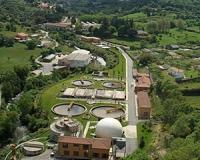 |
Providence RI (SPX) Feb 24, 2010 At the quantum level, the forces of magnetism and superconductivity exist in an uneasy relationship. Superconducting materials repel a magnetic field, so to create a superconducting current, the magnetic forces must be strong enough to overcome the natural repulsion and penetrate the body of the superconductor. But there's a limit: Apply too much magnetic force, and the superconductor's capability is destroyed. This relationship is pretty well known. But why it is so remains mysterious. Now physicists at Brown University have documented for the first time a quantum-level phenomenon that occurs to electrons subjected to magnetism in a superconducting material. In a paper published in Physical Review Letters, Vesna Mitrovic, joined by other researchers at Brown and in France, report that at under certain conditions, electrons in a superconducting material form odd, fluctuating magnetic waves. Apply a little more magnetic force, and those fluctuations cease: The electronic magnets form repeated wave-like patterns promoted by superconductivity. The discovery may help scientists understand more fully the relationship between magnetism and superconductivity at the quantum level. The insight also may help advance research into superconducting magnets, which are used in magnetic resonance imaging (MRI) and a host of other applications. "If you don't understand [what is happening at] the quantum [level], how can you design a more powerful magnet?" asked Mitrovic, assistant professor of physics. When a magnetic field is applied to a superconducting material, vortices measured in nanometers (1 billionth of a meter) pop up. These vortices, like super-miniature tornadoes, are areas where the magnetic field has overpowered the superconducting field state, essentially suppressing it. Crank up the magnetic field and more vortices appear. At some point, the vortices are so widespread the material loses its superconducting ability altogether. At an even more basic level, sets of electrons called Cooper pairs (named for Brown physicist Leon Cooper, who shared a Nobel Prize for the discovery) form superconductivity. But scientists believe there also are other electrons that are magnetically oriented and spin on their own axes like little globes; these electrons are tilted at various angles on their imaginary axes and move in a repeating, linear pattern that resembles waves, Mitrovic and her colleagues have observed. "These funny waves most likely appear because of superconductivity, but the reason why is still unsettled," Mitrovic said. Adding to the mystery, Mitrovic and fellow researchers, including Brown graduate student Georgios Koutroulakis and former Brown postdoctoral associate Michael Stewart, saw that the waves fluctuated under certain conditions. After nearly three years of experiments at Brown and at the national magnetic field laboratory in Grenoble, France, Mitrovic's team was able to produce the odd waves consistently when testing a superconducting material - cerium-cobalt-indium5 (CeCoIn5) - at temperatures close to absolute zero and at about 10 Tesla of magnetic force. The waves appeared to be sliding, Mitrovic said. "It's as if people are yanking on the wave," she added. Mitrovic and her colleagues also observed that when more magnetic energy is added, the fluctuations disappear and the waves resume their repeating, linear patterns. The researchers next want to understand why these fluctuations occur and whether they crop up in other superconducting material.
Share This Article With Planet Earth
Related Links Brown University Powering The World in the 21st Century at Energy-Daily.com
 Waste Could Generate Seven Percent Of Electricity In Spain
Waste Could Generate Seven Percent Of Electricity In SpainZaragoza, Spain (SPX) Feb 24, 2010 Researchers from the University of Zaragoza (UNIZAR) have calculated the energy and economic potential of urban solid waste, sludge from water treatment plants and livestock slurry for generating electricity in Spain. These residues are alternative sources of renewable energy, which are more environmentally friendly and, in the case of solid urban waste, more cost effective. Using waste to ... read more |
|
| The content herein, unless otherwise known to be public domain, are Copyright 1995-2010 - SpaceDaily. AFP and UPI Wire Stories are copyright Agence France-Presse and United Press International. ESA Portal Reports are copyright European Space Agency. All NASA sourced material is public domain. Additional copyrights may apply in whole or part to other bona fide parties. Advertising does not imply endorsement,agreement or approval of any opinions, statements or information provided by SpaceDaily on any Web page published or hosted by SpaceDaily. Privacy Statement |